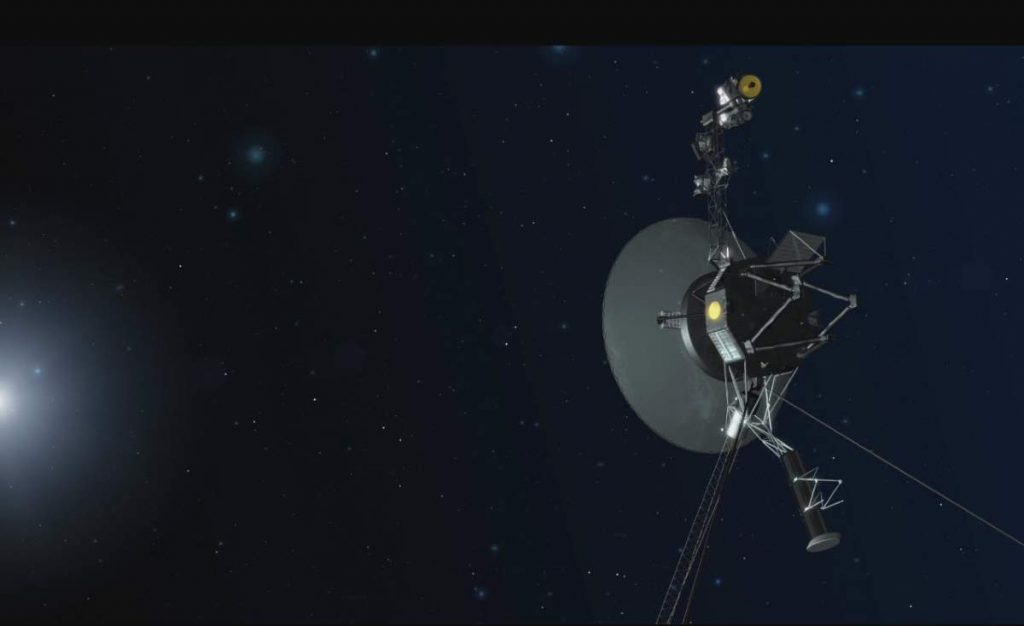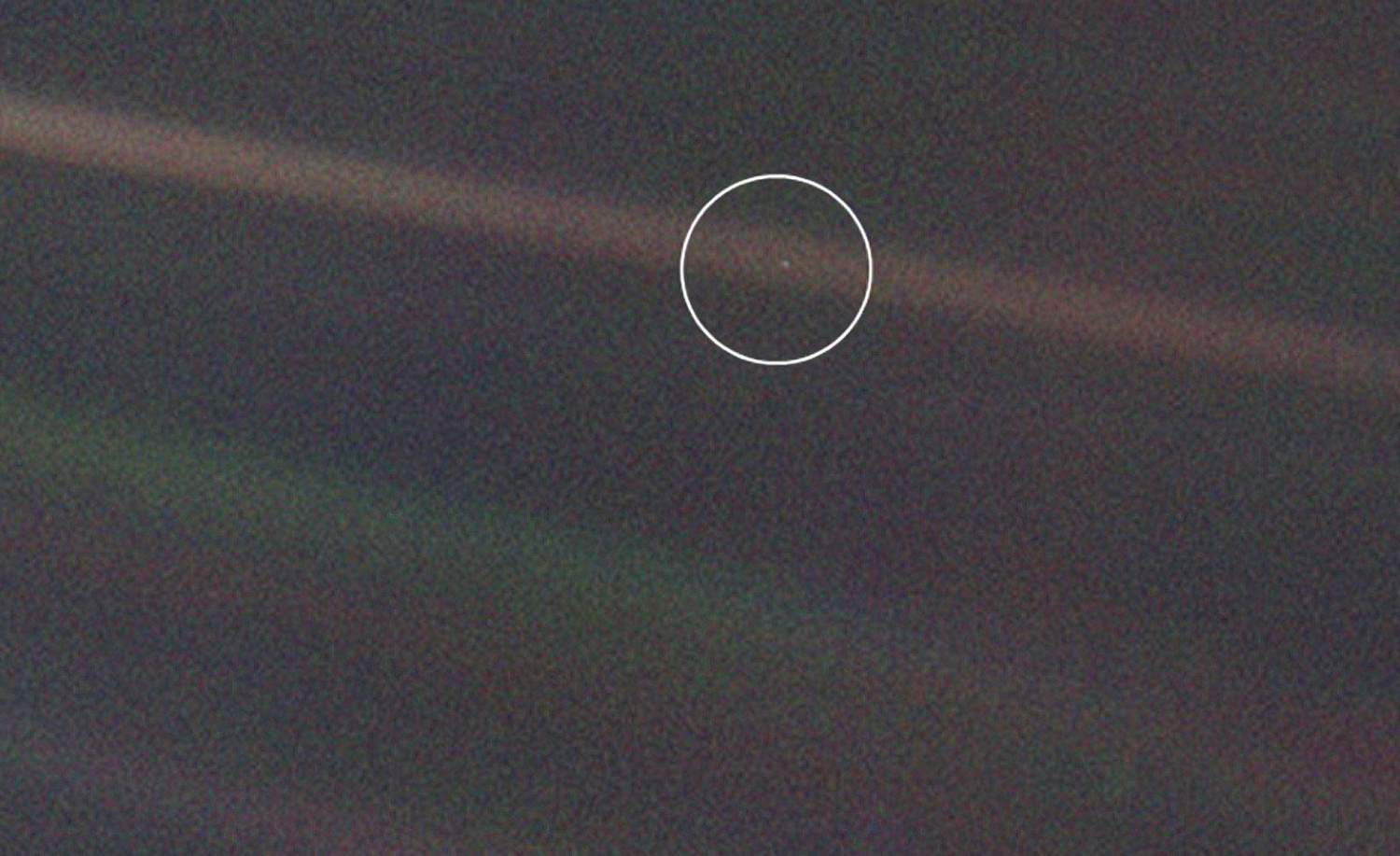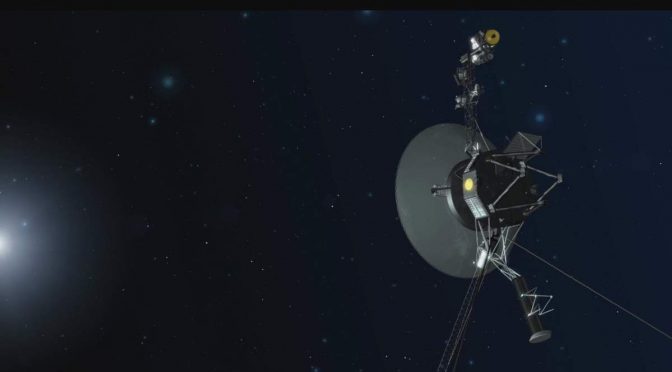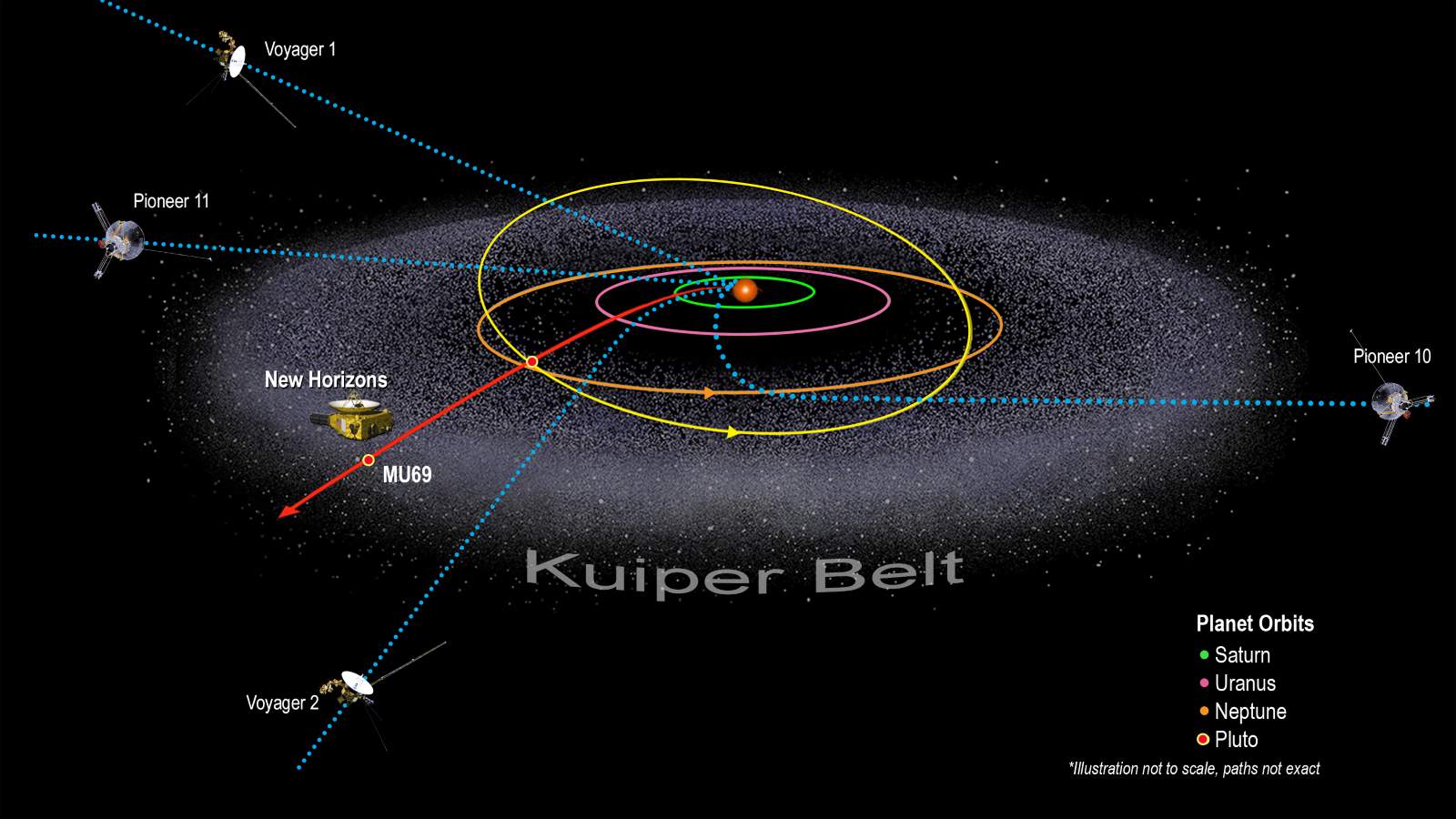Launched by NASA on September 5, 1977, to study the outer solar system, the Voyager 1 is the furthest human-made object from Earth. As of October 2022, it is more than 14,749,847,051 miles (23,737,577,852 km) away from our home planet. It is also moving away at a speed of 38,026.77 mph (61,198.15 km/h) relative to the Sun.
Despite that huge distance (even the light covers that distance in almost 22 hours!), thanks to NASA’s Deep Space Network (DSN), we can still communicate with it (also with its sister, Voyager 2). But how far can Voyager 1 go before we lose communication?
How long we can communicate with Voyager 1?
Using the Deep Space Network, NASA transmits a 20 kW radio signal from Earth. It takes almost 22 hours for the signal to reach Voyager 1 (so it is almost 22 light hours away from the Earth).
The Deep Space Network (DSN) is a worldwide network of U.S. spacecraft communication facilities, located in the United States (California), Spain (Madrid), and Australia (Canberra), that supports NASA’s interplanetary spacecraft missions. Each complex has a huge 70-meter antenna along with multiple 34-meter antennae which can be combined to pick up signals that are thousands of times weaker than a standard FM signal.
The space probe’s sensitive antenna picks up the signal transmitted from the DSN and replies using a 20-watt signal. It takes another 22 hours to reach the Earth and as the signal travels through space, it weakens. By the time it reaches Earth, it’s barely detectable – but the DSN is able to detect it.
Theoretically, there isn’t really a limit on how far we can communicate with objects in space – as long as they reply back to us. With our current technology, we could reliably communicate with the Voyager 1 for thousands of years, even if it’s many light years away from us.
Despite that, we can continue to communicate with Voyager 1 for only a few years more. The reason is: that the probe’s nuclear-powered electrical supply weakens each day.
Voyager 1 does not use a nuclear reactor to power itself. It uses three RTG units – (Radioisotope Thermal Generator), which convert the heat from decaying plutonium into electricity using Peltier devices. It is not very fancy, has no moving parts, and is very reliable, but it produces a lot less power than a nuclear reactor.

Voyager 1 and the “Pale blue dot”
Back in 1990, in order to save power, engineers turned off the spacecraft’s camera. But, before that, it was commanded by NASA to turn its camera around and take a photograph of Earth across a great expanse of space, at the request of Carl Sagan.
Taken from a record distance of about 6 billion kilometers (3.7 billion miles, 40 AU) from Earth, the photo is known as the Pale Blue Dot. In the photograph, Earth is shown as a fraction of a pixel (0.12 pixel in size) against the vastness of space.
The “Pale Blue Dot” is still the farthest image of Earth we’ve ever taken (as of January 2019).

But the old probe still amazes us: on November 28, 2017, a set of thrusters aboard it successfully fired up for the first time since November 1980, after 37 years without use.
Today, only 4 out of 11 scientific instruments on Voyager 1 are still active. These instruments are being used to collect data on magnetic fields, solar winds, and cosmic rays outside of our solar system.
On August 25, 2012, Voyager 1 became the first spacecraft to cross the heliopause (see notes 1) (the vast, bubble-like region of space that surrounds and is created by the Sun) and enter the interstellar medium.
We can continue to communicate with Voyager 1 until 2025
Voyager 1’s extended mission is expected to continue until around 2025 when its radioisotope thermoelectric generators will no longer supply enough electric power to operate its scientific instruments. At that time, it will be more than 15.5 billion miles (25 billion km) away from the Earth.
Scientists will communicate with Voyager 1 and receive the important information it gathers until it eventually sends its last bit of data and disappears silently into space, never to be heard from again.
Video: How far can Voyager 1 go before we lose contact?
The video published by the Primal Space channel below looks at how we communicate with Voyager and when it will eventually stop receiving our signals.
Notes
- The heliosphere is the vast, bubble-like region of space that surrounds and is created by the Sun. In plasma physics terms, this is the cavity formed by the Sun in the surrounding interstellar medium. The “bubble” of the heliosphere is continuously “inflated” by plasma originating from the Sun, known as the solar wind. Outside the heliosphere, this solar plasma gives way to the interstellar plasma permeating our galaxy. Radiation levels inside and outside the heliosphere differ; in particular, the galactic cosmic rays are less abundant inside the heliosphere, so the planets inside (including Earth) are partly shielded from their impact. The word “heliosphere” is said to have been coined by Alexander J. Dessler, who is credited with the first use of the word in
scientific literature.
Sources
- Voyager Mission Status page on NASA.gov
- Voyager 1 on Wikipedia
- Voyager 1’s Radioisotope Thermoelectric Generators (RTG) on NASA.gov
- Heliosphere on Wikipedia
- Moon Landings: All-Time List [1966-2025] - February 2, 2025
- What Is Max-Q and Why Is It Important During Rocket Launches? - January 16, 2025
- Top 10 Tallest Rockets Ever Launched [2025 Update] - January 16, 2025


8 replies on “How far can Voyager 1 go before we lose contact?”
I’m looking at the image of the pale blue dot. How did we ascertain that this dot is, in fact, Earth? Where in this image is everything else? ie: the other planets and Sun. What was used as a point of reference? The cosmos is the only thing that truly puzzles me. Great article.
I am an engineer and a Cornell graduate where Carl Sagan and Tommy Gold were on the faculty and helped get the Voyager programs started. The payoff has been unbelievable. We are still getting data from deep in interstellar space, but I don’t know for how much longer.
Thank you enjoyed reading this, fascinating read.
Time and space, the vastness of the universe it all blows my mind but reminds me just how small our planet is in the great scheme of things.
The electrical supply has lasted for many years, why is it we must put up with inferior systems at home?
When you realize just how vast the universe is you know there is other life out there. Even if there is only one planet per galaxy that would mean there are hundreds of thousands of planets with life. It would be an awful big waste of space otherwise.
Doing a quick bit of math if the nearest star is 4 lightyears away that means it is 23 trillion miles from us (((4 x 365 x 24 x 60 x60 x300,000km/sec)/8) x5)= 23.65 followed by 12 noughts.
By the time we lose contact with Voyager 1 at 15.5 billion miles from earth it will not have covered even 1% at this distance. We may have left the house but we aren’t even out of the backyard yet….
Hi,
I just wanted to reach out and let you know that your content has been quite helpful for me.
My friends from Allthingsaustria recommended your site and I’ve not been disappointed at all 🙂
Cheers,
Mihkael Caron